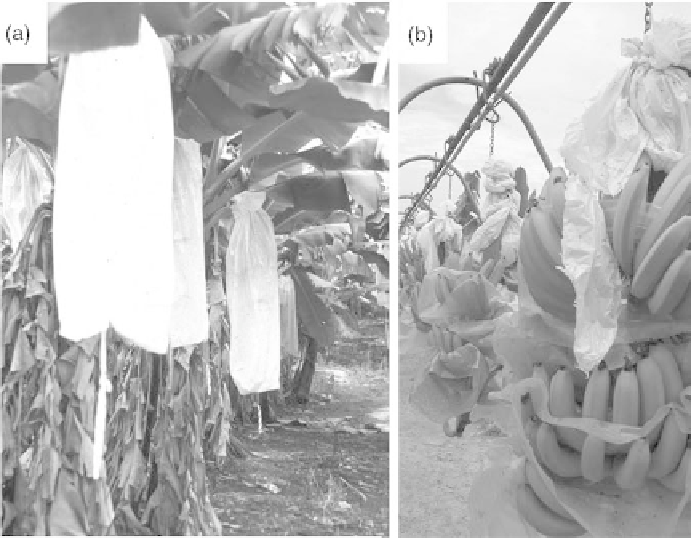Agriculture Reference
In-Depth Information
Bunch covers
Polyethylene bunch covers (30-40 μm thick) are almost universally used
to improve yield and maintain fruit quality (Fig. 8.7). Some covers have a
pesticide impregnated into them to reduce thrips or mite damage. The covers
produce a warmer microclimate around the bunch, which can accelerate
fruit development; they also prevent fi ngers inside the bunch covers from
being chafed by leaves and covered by dust and pesticides; the cover can also
discourage some insects from entering. The higher temperature and humidity
generated inside the bunch cover are helpful in subtropical areas, though
not required. For tropical areas, perforated covers are used for aeration and
cooling. Covers are applied after the bracts have fallen and should hang 15 cm
below the distal hand. Thinner covers are used in the tropics, where wind is
less of a problem. The banana exporting companies are also using protective
pads between developing hands, so that no bruising or chafi ng occurs
to the fruit.
Fig. 8.7.
Bunch covers provide protection of developing fruit from pathogens and
insect damage. The coloured plastic hanging from the bottom of the bunch indicates
date of emergence and is used to indicate harvesting (a). Cableways are used in
large plantations to transport bunches of fruit to the packing sheds to minimize
mechanical injury during handling (b).

